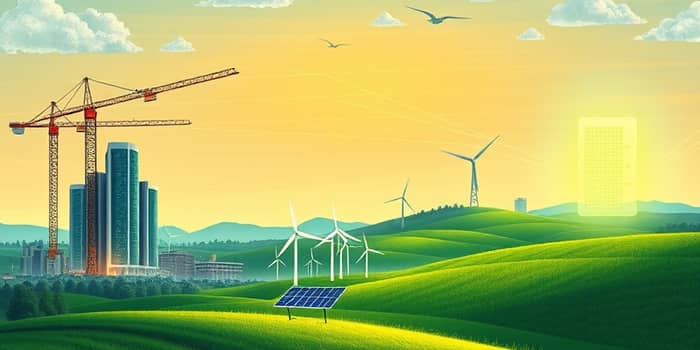
In an era of market volatility and economic uncertainty, investors are increasingly turning to large-scale infrastructure renewal as a source of both stability and growth. As interest rates ebb and lending conditions improve, a wave of capital is poised to reshape physical and digital networks worldwide.
From renewable energy grids to state-of-the-art data centers, the infrastructure landscape is evolving, driven by technological advances, sustainability mandates, and shifting macroeconomic dynamics. This article delves into why global fund flows now favor infrastructure projects, explores the key drivers and regional opportunities, and outlines the path toward an era of digital, green, and resilient development.
Following a peak in investment momentum in 2022, infrastructure allocations slowed amid rising financing costs, supply chain disruptions, and geopolitical uncertainties. Yet as interest rates begin to ease and capital markets stabilize, infrastructure is once again attracting attention as a defensive, stable asset class capable of weathering economic storms.
Even during the most turbulent phases, assets such as toll roads, utilities, and broadband networks continue to generate predictable cash flows. Institutional investors—pension funds, insurance companies, and sovereign wealth funds—view these projects as long-duration holdings that deliver income streams linked to inflation and resilient through downturns.
Data from Q1 2025 underscores the surge in investor appetite. Listed infrastructure outperformed global equities by 660 basis points over the trailing 12 months (MSCI World Index comparison).[7] Private infrastructure funds, with returns generally ranging from 8% to 11%, demonstrated relative uncorrelation to broader macro headwinds, highlighting the asset class’s reliability.
However, fundraising activity in 2024 experienced delays: the average time to raise capital for an infrastructure fund extended to 31 months, up from a historical average of 22 months.[8] This lengthening timeline reflects a more selective investor base, but once commitments are secured, funds deploy capital with purpose—doubling greenfield deal activity in data centers and renewables year-over-year.[7]
Several trends are reshaping the infrastructure investment landscape:
Investment patterns vary by region, reflecting local policy environments and economic priorities. Notable areas of growth include:
Despite robust tailwinds, investors must navigate a complex risk environment. Key challenges include:
As we move deeper into 2025, the concept of “Infrastructure 3.0” is taking shape—a synthesis of green energy, digital connectivity, and resilient design. Projects that integrate smart sensors, AI-driven monitoring, and low-carbon materials will define the next wave of capital deployment.
Collaboration among governments, multilateral institutions, and the private sector will be critical to close funding gaps and fast-track transformative projects. Innovative financing models—such as green bonds, public-private partnerships, and blended finance structures—are emerging to bridge resource shortfalls and align incentives around sustainability and social impact.
Ultimately, the shift toward a more interconnected, decarbonized, and disaster-resilient world is fueling unprecedented demand for infrastructure. As global fund flows continue to favor these projects, investors have a unique opportunity to generate stable returns while shaping societies and economies for decades to come.
References













